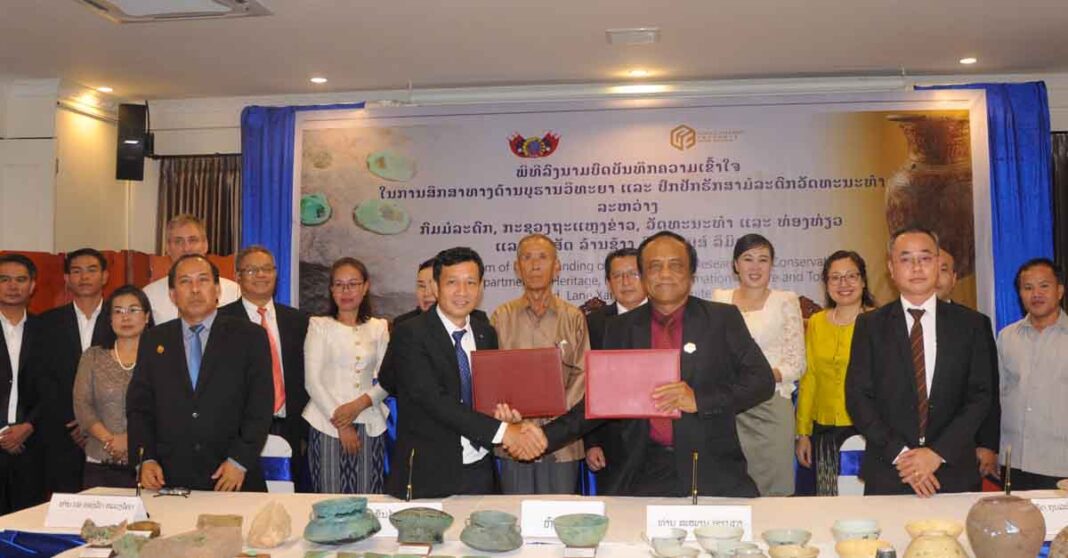Lane Xang Minerals Limited Sepon (LXML) presented 1,320 culturally significant historical artifacts to the Lao Government yesterday.
The historical artifacts were made from stone, copper, iron, ceramics, and gems. The items were discovered in the area surrounding Sepon mine by dedicated teams of archaeologists.
Since 2008, LXML has invested over USD 1.6 million preserving thousands of years of Lao history and heritage through an archaeological research program with the Department of Heritage (DoH) of the Ministry of Information, Culture and Tourism, the National University of Laos, and James Cook University of Australia.
The program sponsors fieldwork uniting a unique community at local, national, and international levels. Volunteers from Vientiane and Savannakhet, local villagers, Australian and Lao university students, archaeologists, and Lao officials cooperate closely together to conduct research.
Mr Vansy Kuamua, Deputy Minister of Information, Culture and Tourism and officials from Savannakhet and Vilabouly joined the handover ceremony in Vientiane, acknowledging LXML’s respect for Lao cultural heritage and the importance of preserving cultural sites to promote tourism.
Mr Saman Aneka, LXML Managing Director handed over 1320 artifacts to Mr Phakhanxay Sikhanxay, Director General of Heritage Department, Ministry of Information, Culture and Tourism.
The items will be placed on display at the Lao National Museum, Savannakhet Museum, Vilabouly Cultural Hall and Heritage Department. LXML also handed over 7,881 artifacts in 2019 and 280 in February 2022 to the Lao Government and provided LAK 144 million to build display cabinets for the Lao National Museum.
The two parties signed a Memorandum of Understanding (MOU) to reinforce principles for future cooperation in the preservation of cultural heritage.
“Today marks over a decade of cooperation with the Ministry of Information and Culture. This is a significant milestone in LXML’s partnership,” said Mr Saman Aneka, LXML Managing Director. “LXML is committed to working hand in hand with our ministry counterparts for at least another ten years until mine closure to protect and preserve Lao cultural heritage.”
Remarkable discoveries of artefacts and heritage sites in the area surrounding Sepon mine open a door into fascinating ancient civilizations to show us how our ancestors lived thousands of years ago.
In March 2018, a team of archaeologists discovered evidence of more than 200 ancient mine shafts dating back over 3,000 years. Some of the items discovered date back almost ten thousand years.
Mining has been essential in the development of human society throughout history. Vilabouly is acknowledged internationally as one of the first mining and metallurgy sites in Southeast Asia.
Ancient mining practices continued there until about 1,300 years ago, (700 AD), where people excavated rich copper ore and refined it in Peun Baolo and Thong Na-Gneuak (Dragon or “Naga Serpent” Field).
Other artifacts include mining equipment such as wooden ladders, pulleys, mallets, painted bamboo baskets, and rope made from lianas; a large “Dong Son” bronze era drum currently on display at the National Museum in Vientiane; and crucibles, copper ingots, jewelry, ceremonial items, weapons, pottery, and other artefacts highlighting Lao PDR’s pivotal place in regional history.



